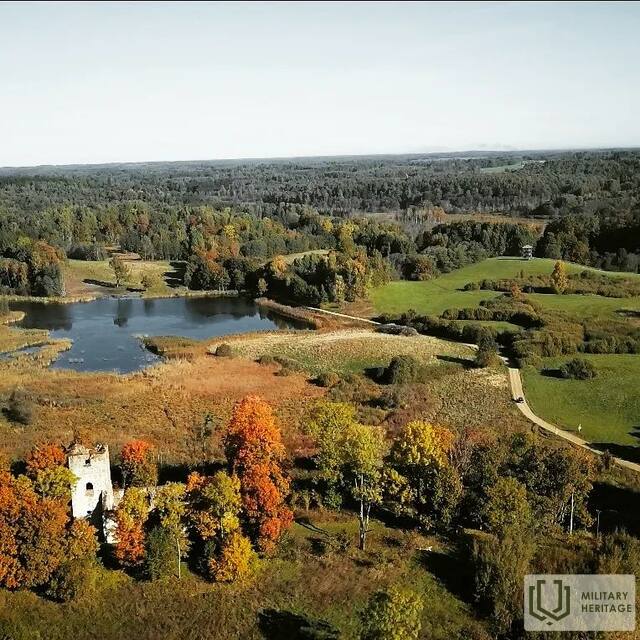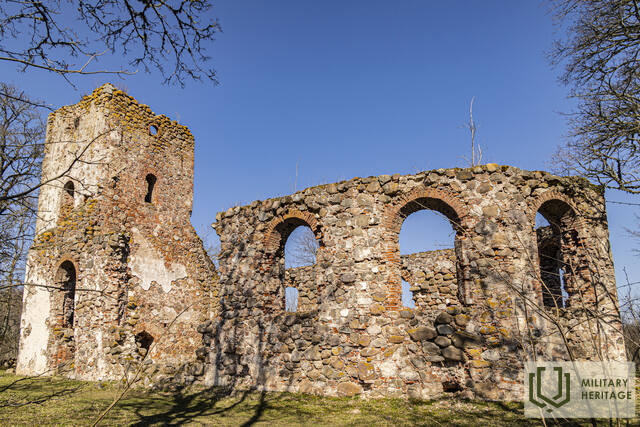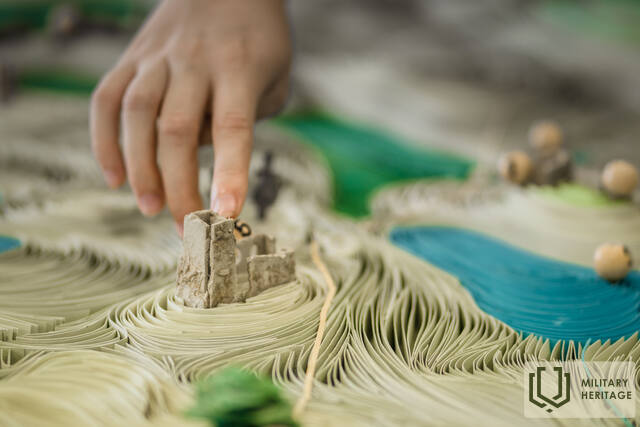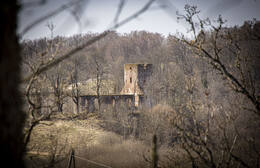Embute Church walls - witnesses of World War II
The Embute Church is one of the most vivid witnesses of the Second World War in Kurzeme. Traces of artillery and other shells can still be seen on the church walls and bell tower. The German army used the church (like many others in Kurzeme and elsewhere) for impregnable defensive purposes. As a result, the church was destroyed and has not been rebuilt since the Soviet
The cultural monument of Embute is the church, which was built from 1674 to 1684. The church was not damaged during the First World War. In 1926 the church was repaired, but at the end of the Second World War the church was destroyed. Only the walls and the bell tower remain, where traces of artillery shells can be seen.
Embute Church, Embute Castle and Embute Castle Mound were the main obstacles in the path of the Red Army tanks and the Lanka River valley, in the highlands of which they are located. Between 28 and 31 October 1944, the Red Army offensive was halted here and allowed the German High Command to draw up the necessary reserves. On 31 October, the Soviet offensive was able to advance as far as the river Šķervele, bypassing the Lanka river valley to the north of the Embute hillfort, and to continue the offensive towards Nikrace.









